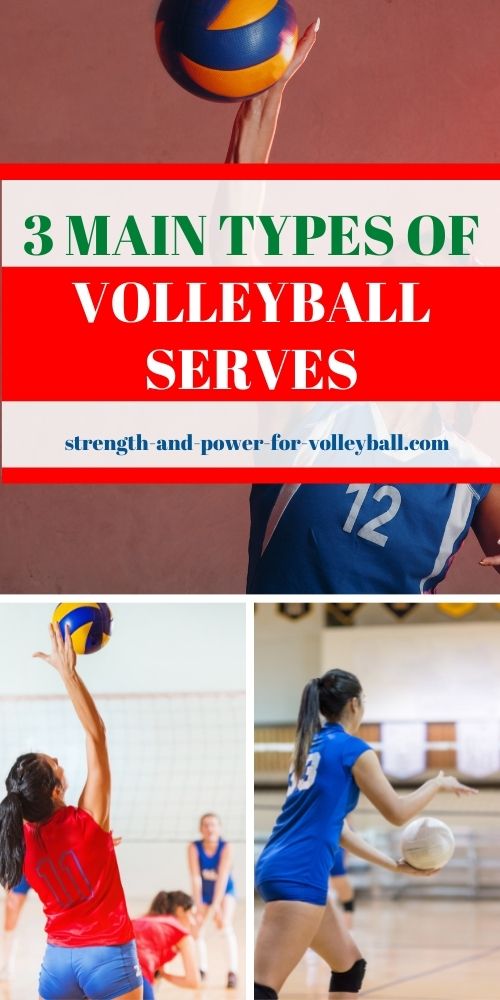How to Serve a Volleyball
Skills and Techniques of Serving
Learning how to serve a volleyball is very important to success in volleyball.
The serve is the only skill in volleyball where the player has complete control.
There are three main types of serves in volleyball. The underhand serve is most common for beginners.
The overhand topspin and the overhand float serve are the most common serves for competitive volleyball.
More advanced types of serves include jump serves and float serves to different areas of the court depending on what the coach has signaled.
Three Main Types of Volleyball Serves
Underhand Serve
The underhand serve is the easiest one to teach because there are few variables. Since the underhand serve doesn't involve a toss, it's easier to learn and control.
Here are a few fundamentals of learning to underhand serve for right-handed players.
- Start with your feet in an up-and-back stride position with the weight on the back right foot.
- Ball is held in the left hand in front of your body just below your waist, in front of the right hip.
- Shoulders and upper body should be slightly leaning forward.
- Eyes are focused on the contact point of the ball.
- Contact the ball with the flat part of the fist and palm/pointer/thumb area.
- Swing the right arm backward then forward in a pendulum manner.
- Weight is then transferred to the front foot as the arm swings to contact the ball.
- Contact is made just below the equator in the center of the ball.
- The left hand drops just prior to contact.
- After contact, continue to follow through the ball toward the target.
Overhand Serve
When learning how to serve a volleyball, you will need to learn
techniques for
the overhand serve. The overhand (overhead) serve is the most popular
serve in high school and college. The two main overhand serves are the
topspin and float.
The overhand serve is tougher to pass than the underhand serve because it comes faster and drops faster.
Overhand serving is similar to throwing a ball.
Cues used in overhand serving are "toss and draw" and "step and swing".
Here are a few fundamentals of learning to overhand serve for right-handed players.
How to Serve a Volleyball
1. Start in an up-and-back stride with most of your weight on your back right foot.
2. The left hand holds the volleyball extended forward and in front of your right side.
3. The shoulder is forward and the right shoulder is back ready to draw back.
4. Toss the ball in front of your right side.
The toss is a very important part of volleyball serving. The server should toss the ball in a lifting motion and not lean forward or drop the left hand.
Good tosses are very important because a consistent toss will produce fewer variables to contend with when contacting the ball.
Common mistakes
Many young servers toss the ball without the draw and lose all the
power. A swing without power will likely not making it over the net.
Also, if you don't have much power, you need to aim high. Aim at an
object on
ceiling above the net. This will help you get the ball over giving you
chance to
get the ball in the court.
How to Serve a Floater
Difference between the floater and topspin serve
When learning how to serve a volleyball, it's important to consider body
position. The main difference between the floater and topspin serve is
the body position on the ball, contact, and follow-through.
For the float serve, contact is made in front of the right side of the
body, and the high hand hits solidly behind the middle of the ball
creating little or no spin.
The flight of the ball resembles the knuckle ball thrown by a baseball
pitcher.
The float serve is tough to pass because the inconsistent trajectory
causes the passer to misjudge the flight of the ball making it difficult
to pass.
With the topspin serve, the server steps under the toss. The server swings up, contacting underneath the ball.
The topspin serve can be more predictable because it's easier to judge
the flight of the ball. However, the ball can be tough to pass because
it can drop rapidly if the passer isn't used to passing topspin serves.
If you enjoyed these tips and would like to keep it close to you at any time, just save this pin to your Pinterest Volleyball Training Board.
How to Serve a Volleyball Related Pages
How to Volleyball Pass
Volleyball › How to Play Volleyball › How to Serve

